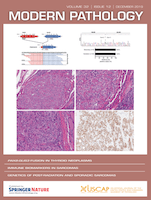
MODERN PATHOLOGY
Scope & Guideline
Shaping the Landscape of Diagnostic Innovation
Introduction
Aims and Scopes
- Molecular Pathology:
The journal extensively covers studies that explore the molecular mechanisms underlying various diseases, particularly cancers, and the implications of genetic alterations on diagnosis and treatment. - Digital Pathology and AI Integration:
There is a strong emphasis on the application of digital pathology and artificial intelligence in diagnostic processes, which aims to improve efficiency, accuracy, and reproducibility in pathology practices. - Tumor Microenvironment and Immunology:
Research focusing on the tumor microenvironment, including immune cell interactions and their prognostic implications, is a key area of interest, reflecting the growing importance of immunotherapy and immune profiling. - Histopathological Classification and Grading:
The journal discusses advancements in histopathological classification systems and grading criteria for various tumors, contributing to more precise prognostic assessments and treatment strategies. - Clinical and Pathologic Correlations:
A significant focus is placed on the correlation between clinical findings and pathologic features, helping to bridge the gap between pathology and clinical practice.
Trending and Emerging
- Precision Medicine and Genomic Profiling:
An increasing number of studies focus on the use of genomic profiling to inform treatment decisions, particularly in oncology, emphasizing personalized approaches to patient care. - Artificial Intelligence in Pathology:
The integration of AI tools for diagnostic purposes is rapidly growing, with numerous papers exploring their applications in improving diagnostic accuracy and workflow efficiency. - Immune Checkpoint Inhibitors and Tumor Immunology:
Research related to immune checkpoint inhibitors, their mechanisms, and their impact on tumor microenvironments is trending, reflecting the importance of immunotherapy in current cancer treatment paradigms. - Multi-Omic Approaches:
There is a notable trend toward utilizing multi-omic profiles (genomic, transcriptomic, proteomic) to gain a comprehensive understanding of tumor biology, which aids in better diagnostic and prognostic assessments. - Digital Pathology Advances:
The use of digital pathology for remote diagnostics, education, and research is on the rise, particularly in light of the COVID-19 pandemic, which has accelerated the adoption of virtual tools in pathology.
Declining or Waning
- Traditional Diagnostic Methods:
There seems to be a waning interest in traditional diagnostic methods that do not incorporate molecular or digital enhancements, as the field moves towards more innovative, technology-driven approaches. - Basic Histopathology Without Molecular Context:
Studies focusing solely on basic histopathological features without integrating molecular insights are becoming less common, as researchers increasingly recognize the need for a more comprehensive understanding of disease. - Generalized Cancer Research:
Broad studies of cancer without specific focus on molecular subtypes or targeted therapies are less frequently published, as the field shifts towards personalized medicine and precision pathology.
Similar Journals
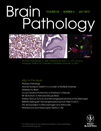
BRAIN PATHOLOGY
Exploring the Complexities of Neurological DisordersBRAIN PATHOLOGY, published by WILEY, is a leading journal in the fields of neurology, neuroscience, and pathology, recognized for its rigorous peer-review process and high-impact research contributions. With an impressive impact factor and consistently ranked in the Q1 quartile across multiple categories, BRAIN PATHOLOGY maintains a prominent status, with a Scopus ranking placing it among the top 10% of journals in its fields. Since its inception in 1990, the journal has served as a crucial platform for researchers and clinicians alike, disseminating groundbreaking findings that advance our understanding of brain diseases and injuries. Through its dedication to publishing high-quality, innovative research, BRAIN PATHOLOGY plays a vital role in shaping the future of brain pathology research. While it does not currently offer open access, articles can be accessed through institutional subscriptions. Researchers, professionals, and students are encouraged to contribute to and engage with this esteemed publication to foster knowledge and collaboration within this dynamic field.
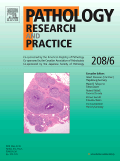
PATHOLOGY RESEARCH AND PRACTICE
Connecting Theory and Practice in PathologyPATHOLOGY RESEARCH AND PRACTICE is a premier journal in the field of pathology and forensic medicine, published by Elsevier GmbH in Germany. With a rich publication history since 1978 and an impressive convergence period extending to 2024, this journal serves as a vital resource for researchers and professionals dedicated to advancing the understanding of pathological processes. It holds notable rankings, including Q3 in Cell Biology and Q2 in Pathology and Forensic Medicine for 2023, reflecting its significance in the academic community. The journal aims to publish innovative research findings, reviews, and case studies, facilitating a deeper understanding of disease mechanisms and improving diagnostic practices. Authors and readers alike benefit from its reputable platform, noted for its challenging and rigorous peer-review process. By fostering a collaborative environment and providing open access options, PATHOLOGY RESEARCH AND PRACTICE continues to contribute meaningfully to the discourse within its respective fields, thereby appealing to a diverse audience of researchers, professionals, and students.
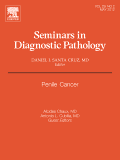
SEMINARS IN DIAGNOSTIC PATHOLOGY
Empowering professionals through cutting-edge research.Seminars in Diagnostic Pathology is a premier journal that has established itself as an essential resource in the field of pathology since its inception in 1984. Published by W B Saunders Co-Elsevier Inc, this journal boasts an impressive Q1 ranking in the pathology category for 2023, placing it in the top tier of medical journals worldwide. With a focus on diagnostic pathology, it offers a platform for groundbreaking research and advancements that bridge the gap between basic science and clinical practice. The journal is committed to publishing high-quality review articles, case reports, and expert opinions that provide valuable insights for professionals, researchers, and students alike. Although it operates on a subscription model, the journal's extensive impact is reflected in its Scopus rank (#56/208), with a remarkable 73rd percentile standing in the pathology and forensic medicine category. The journal's authoritative content not only aids in enhancing knowledge but also fosters an understanding of the evolving challenges and methodologies in diagnostic pathology, making it an indispensable tool for anyone dedicated to excellence in the field.
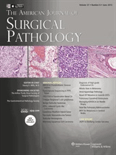
AMERICAN JOURNAL OF SURGICAL PATHOLOGY
Your Premier Resource for Pathological InsightsThe American Journal of Surgical Pathology, published by Lippincott Williams & Wilkins, is a premier peer-reviewed journal serving as a vital resource for pathologists, surgeons, and researchers in the medical field. With an impressive impact factor reflective of its esteemed standing in the academic community, the journal ranks in the Q1 quartile for Anatomy, Pathology and Forensic Medicine, and Surgery as of 2023. The journal's Scopus rankings further highlight its significance, placing it within the top tiers in multiple medical disciplines. Established in 1977 and continuing through 2024, its scope encompasses groundbreaking research, critical reviews, and updates in surgical pathology, making it an essential tool for advancing the scientific community's understanding of disease mechanisms and therapeutic approaches. Researchers, clinicians, and students will find both comprehensive studies and innovative insights, ensuring they remain informed about the latest developments in surgical pathology.

PATHOLOGICA
Driving Excellence in Pathology Research and Clinical Practice.PATHOLOGICA is a leading academic journal dedicated to the field of pathology and forensic medicine, published by PACINI EDITORE. With a rich history dating back to its inception in 1945, the journal has consistently contributed to the advancement of knowledge in these vital areas of medical research and practice. Currently ranked in the Q1 quartile for Pathology and Forensic Medicine and holding an impressive position as #42 out of 208 in the Scopus rankings, it reflects a significant impact within the academic community, boasting an 80th percentile ranking. The journal is committed to publishing high-quality, peer-reviewed articles that explore innovative research findings and clinical advancements, making it an essential resource for researchers, clinicians, and students alike. Though it does not offer open access, PATHOLOGICA continues to foster scholarly communication by disseminating cutting-edge research findings, thus playing a pivotal role in enhancing pathology education and practice worldwide.
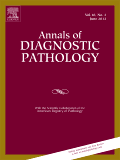
Annals of Diagnostic Pathology
Shaping the Future of Pathology, One Study at a Time.Annals of Diagnostic Pathology, published by Elsevier Science Inc, is a pivotal journal in the field of diagnostic pathology that has significantly contributed to the advancement of medical science since its inception in 1997. With an ISSN of 1092-9134 and E-ISSN of 1532-8198, this esteemed journal is positioned within the Q2 category in both Medicine (miscellaneous) and Pathology and Forensic Medicine, reflecting its high-quality research contributions, showcased by its ranking at #73 out of 208 in Scopus for the latter category. The journal's scope encompasses various aspects of diagnostic pathology, from innovative techniques to critical reviews of pathologic findings, making it an essential resource for researchers, medical professionals, and students dedicated to enhancing diagnostic accuracy and patient care. Although it does not currently offer open access options, its wide readership and impactful publications continue to influence clinical practices and research agendas. With a convergence period extending to 2024, Annals of Diagnostic Pathology remains a leading platform for disseminating valuable knowledge in this dynamic field.
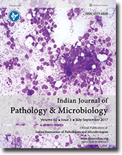
Indian Journal of Pathology and Microbiology
Illuminating the Frontiers of Pathological ResearchIndian Journal of Pathology and Microbiology, published by Wolters Kluwer Medknow Publications, is a distinguished open-access journal that has been fostering knowledge dissemination in the fields of pathology and microbiology since 2008. With an ISSN of 0377-4929 and E-ISSN 0974-5130, this journal serves as a critical resource for researchers and practitioners committed to advancing their understanding of medical sciences in India and beyond. Spanning decades of valuable research contributions since its establishment in 1972, it provides a platform for peer-reviewed articles that explore current trends and innovations in medicinal pathology and microbiological studies. Although it holds a Q4 ranking in categories such as medicine and microbiology, it maintains a notable Q3 classification in pathology and forensic medicine, highlighting its relevance to contemporary scientific discussions. Accessible freely to a global audience, the journal plays a pivotal role in enhancing scholarly communication and collaboration, making it an indispensable tool for students, professionals, and researchers alike aiming to contribute to this evolving discipline.
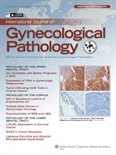
INTERNATIONAL JOURNAL OF GYNECOLOGICAL PATHOLOGY
Exploring the complexities of gynecological diseases.INTERNATIONAL JOURNAL OF GYNECOLOGICAL PATHOLOGY, published by Lippincott Williams & Wilkins, is a premier academic journal dedicated to the intricate field of gynecological pathology, serving a critical role in advancing the understanding of diseases related to women's reproductive health. Since its inception in 1982, this journal has established itself as a key resource for researchers, clinicians, and students, with a current impact factor that reflects its esteemed reputation; it is ranked in the Q2 category for both Obstetrics and Gynecology, as well as Pathology and Forensic Medicine, signifying its prominence in academic circles. The journal's scope encompasses a wide array of topics, including histopathological findings, diagnostic methodologies, and evolving therapeutic strategies, all pivotal to enhancing patient care. With a steadfast commitment to disseminating high-quality research until the projected year of 2024, the INTERNATIONAL JOURNAL OF GYNECOLOGICAL PATHOLOGY is an essential read for those looking to stay abreast of the latest developments in this vital area of medical science.

Oral & Maxillofacial Pathology Journal
Advancing Knowledge in Oral HealthOral & Maxillofacial Pathology Journal is a prominent peer-reviewed publication dedicated to advancing the field of oral and maxillofacial pathology. Published by the KAIRALI SOCIETY OF ORAL & MAXILLOFACIAL PATHOLOGISTS, this journal aims to provide a platform for sharing innovative research, clinical practices, and new techniques related to the diagnosis and management of oral diseases. With a commitment to open access, it ensures that valuable knowledge reaches a global audience of researchers, dental professionals, and students alike. Although specific impact metrics such as the HIndex and Scopus ranking are not listed, the journal is regarded as an essential resource for those involved in the oral health community. It plays a crucial role in fostering collaboration and disseminating cutting-edge advancements that can enhance patient care and clinical outcomes in oral pathology. For professionals looking to stay ahead in this dynamic field, Oral & Maxillofacial Pathology Journal serves as an indispensable tool for both foundational learning and advanced research.

VIRCHOWS ARCHIV
Advancing the Frontiers of Medicine and PathologyVirchows Archiv, published by Springer, is an esteemed journal dedicated to the fields of Medicine and Pathology, featuring high-quality research from various domains including Cell Biology and Molecular Biology. With its inception dating back to 1947, Virchows Archiv has been a pivotal platform for advancing the understanding of pathological and forensic medicine. As evidenced by its impressive Scopus rank, placing it within the top 15% of journals in Pathology and Forensic Medicine, it continues to maintain a strong presence with a Q1 classification in its category as of 2023. Although it does not offer Open Access options, the journal remains critical for researchers and professionals seeking to publish and access pioneering findings that can impact clinical practices and the academic community. The journal’s rigorous peer-review process ensures that only the highest quality research is disseminated, making it an essential resource for those engaged in the ever-evolving fields of health and biological sciences.